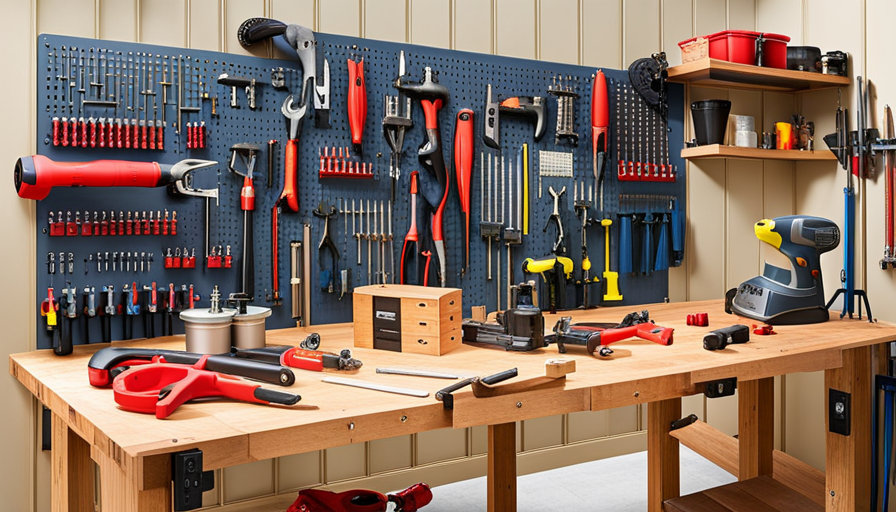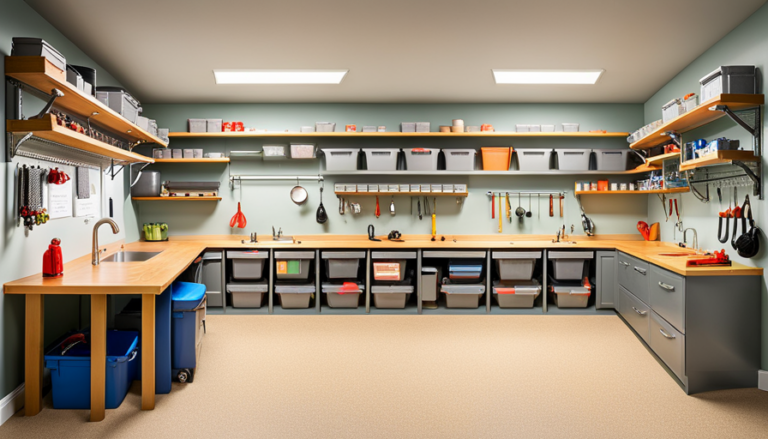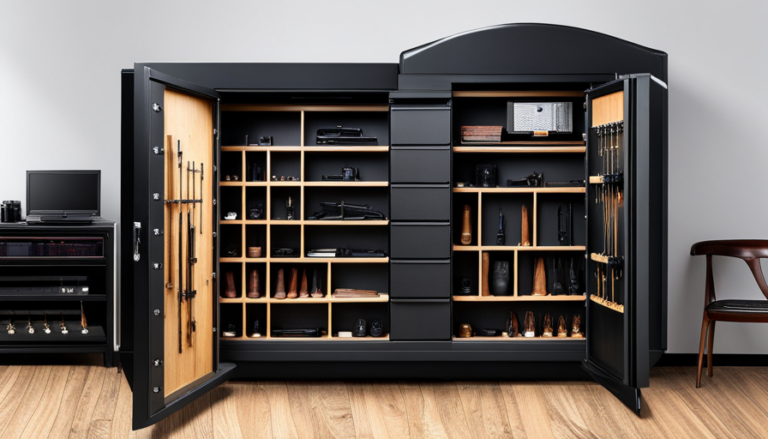How To Organize Workbench
Are you tired of struggling to find your tools and materials when you need them? Do you dream of…

Are you tired of struggling to find your tools and materials when you need them? Do you dream of having a clean, organized workbench that allows you to work efficiently and effectively? Well, look no further! In this article, we will show you how to transform your messy workbench into a well-organized workspace that will make your projects a breeze.
Organizing your workbench may seem like a daunting task, but with the right strategies and tools, it can be easily achieved. By following a systematic approach and prioritizing your needs, you can create a space that is tailored to your specific requirements.
In this article, we will guide you through the process step-by-step.
First, we’ll help you assess your needs and prioritize what items are essential for easy access.
Then, we’ll show you how to clear clutter and create storage solutions using various organizational tools.
Next, we’ll discuss the importance of creating dedicated areas for different types of tools and materials.
Finally, we’ll provide tips on establishing a system for maintenance and regular cleanup.
So let’s get started on transforming your chaotic workbench into an organized haven where productivity thrives!
Key Takeaways
- Assess needs and prioritize essential items for easy access
- Clear clutter and create storage solutions using organizational tools
- Establish a system for maintenance and regular cleanup
- Create dedicated areas for different types of tools and materials
Assess Your Needs and Prioritize
Before you dive into organizing your workbench, take a moment to assess your needs and figure out what should be prioritized. Start by assessing workspace efficiency – think about how you can optimize the flow of your work.
Consider the tools and materials you use most frequently and make sure they’re easily accessible. Think about the types of projects you typically work on and organize your workbench accordingly. This’ll save time and effort in the long run.
Once you’ve assessed your needs, prioritize them based on importance or frequency of use. By doing this, you can create a more efficient and functional work area that suits your specific requirements.
Now that we’ve discussed assessing your needs, let’s move on to clearing and decluttering your workbench for optimal organization.
Clear and Declutter Your Workbench
To create a harmonious and efficient workspace, it’s time to sweep away the chaos and bring order to your cluttered workbench. Clearing and decluttering your workbench is an essential step in workbench organization and improving workspace efficiency.
Here is a 3-column, 5-row table to help you visualize the process:
| Step | Action | Purpose |
|---|---|---|
| 1 | Remove all items from the workbench | Create a clean slate |
| 2 | Sort items into categories (tools, supplies, materials) | Identify what you have |
| 3 | Evaluate each item’s usefulness and frequency of use | Determine importance |
| 4 | Discard or donate items that are no longer needed or used rarely | Reduce clutter |
| 5 | Assign designated spots for each category of items on the workbench | Establish organization |
By following these steps, you can clear and declutter your workbench, making it easier to find tools and materials when you need them. Once you have achieved a tidy workspace, it’s time to move on to utilizing storage solutions and organizational tools.
Note: The subsequent section will discuss how to utilize storage solutions and organizational tools for further improving your workbench organization.
Utilize Storage Solutions and Organizational Tools

Once you’ve cleared away the clutter, it’s time to level up your work area by incorporating storage solutions and organizational tools that’ll help streamline your workflow.
Here are two sub-lists of ideas to help you create an efficient workbench:
-
Storage bins: Invest in a variety of storage bins in different sizes. Use smaller bins for loose screws, nails, and other small items, and larger bins for bulkier tools or materials. Label each bin clearly so you can easily find what you need.
-
Pegboard organization: Install a pegboard on the wall behind your workbench. This versatile tool allows you to hang frequently used tools within reach. Use hooks and hangers to keep everything organized and visible.
By utilizing storage bins and pegboard organization, you can maximize the space on your workbench and keep everything easily accessible.
Once these systems are in place, it’s time to create dedicated areas for different types of tools and materials.
Create Dedicated Areas for Different Types of Tools and Materials
Transform your work area into a tool and material utopia by creating dedicated areas for different types of tools and materials. This not only makes it easier to find what you need, but also helps prevent accidents and promotes efficiency.
Start by identifying each tool and labeling its designated spot. Use clear bins or drawers for smaller items like screws, nails, and bits. For larger tools such as power saws or drills, hang them on a pegboard or place them in a clearly marked area.
Remember to prioritize safety measures by keeping sharp objects separate from delicate ones and storing flammable materials properly. By organizing your workbench in this way, you’ll be able to quickly locate the right tool for the job while reducing the risk of injury or damage.
Transitioning into establishing a system for maintenance and regular cleanup will ensure that your newly organized workspace stays clutter-free and efficient.
Establish a System for Maintenance and Regular Cleanup
Maintaining a clean and organized workspace is crucial for optimal efficiency and preventing accidents. Establishing a system for maintenance and regular cleanup will help you stay on top of keeping your workbench tidy. Here are some time management tips and safety measures to incorporate into your routine:
| Time Management | Safety Measures |
|---|---|
| Set aside specific time each day or week to clean up your workbench. | Always wear protective gear such as gloves, goggles, and a dust mask when cleaning. |
| Prioritize tasks based on urgency and importance. This will help you allocate enough time for cleanup without sacrificing productivity. | Regularly inspect your tools and equipment for any signs of damage or wear that could pose safety risks. |
| Use storage solutions such as bins, shelves, or pegboards to keep tools organized and easily accessible. | Keep your work area well-lit to avoid accidental trips or falls in cluttered spaces. |
By incorporating these time management techniques and safety measures into your routine, you can ensure that your workbench remains clean, organized, and safe at all times.





